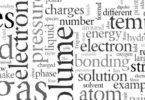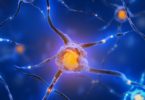Magnetic Materials – Electromagnetic Theory Questions:
Ques: When a ferromagnetic material is heated to temperature above its Curie temperature, the material?
(a) Is permanently magnetized
(b) Remains ferromagnetic
(c) Behaves like a diamagnetic material
(d) Behaves like a paramagnetic material
Ques: The magnetic susceptibility of any paramagnetic material changes with absolute temperature T as
(a) Directly proportional to T
(b) Remains constant
(c) Inversely proportional to T
(d) Exponentially decaying with T
Related: General Principles & Processes of Isolation of Metals MCQs
Ques: Which of the following is most suitable for the core of electromagnets?
(a) Soft iron
(b) Steel
(c) Copper-nickel alloy
(d) Air
Ques: A superconductor exhibits perfect
(a) Ferrimagnetism
(b) Ferromagnetism
(c) Paramagnetism
(d) Diamagnetism
Ques: If a ferromagnetic material is inserted in a current carrying solenoid, the magnetic field of solenoid
(a) Largely increases
(b) Slightly increases
(c) Largely decreases
(d) Slightly decreases
Ques: Identify the paramagnetic substance
(a) Iron
(b) Aluminium
(c) Nickel
(d) Hydrogen
Ques: Magnetic permeability is maximum for
(a) Diamagnetic substance
(b) Paramagnetic substance
(c) Ferromagnetic substance
(d) All of these
Related: Non verbal analogy
Ques: Among the following properties describing diamagnetism identify the property that is wrongly stated
(a) Diamagnetic material do not have permanent magnetic moment
(b) Diamagnetism is explained in terms of electromagnetic induction
(c) Diamagnetic materials have a small positive susceptibility
(d) The magnetic moment of individual electrons neutralize each other
Ques: A frog can be deviated in a magnetic field produced by a current in a vertical solenoid placed below the frog. This is possible because the body of the frog behaves as
(a) Paramagnetic
(b) Diamagnetic
(c) Ferromagnetic
(d) Antiferromagnetic
Ques: If a diamagnetic substance is brought near north or south pole of a bar magnet, it is
(a) Attracted by the poles
(b) Repelled by the poles
(c) Repelled by the north pole and attracted by the south pole
(d) Attracted by the north pole and repelled by the south pole
Ques. Which of the following is a non magnetic material?
(a) Iron
(b) Sulphur
(c) Nickel
(d) Cobalt
Related: Nuclear Chemistry Questions
Ques: Curie-Weiss law is obeyed by iron at a temperature ……
(a) Below Curie temperature
(b) Above Curie temperature
(c) At Curie temperature only
(d) At all temperatures
Ques: The universal property of all substances is
(a) Diamagnetism
(b) Ferromagnetism
(c) Paramagnetism
(d) All of these
Ques: An example of a diamagnetic substance is
(a) Aluminium
(b) Copper
(c) Iron
(d) Nickel
Ques: A diamagnetic material in a magnetic field moves
(a) From weaker to the stronger parts of the field
(b) Perpendicular to the field
(c) From stronger to the weaker parts of the field
(d) In none of the above directions
Related: Chemical Equilibrium practice problems
Ques: Magnets cannot be made from which of the following substances
(a) Iron
(b) Nickel
(c) Copper
(d) All of the above
Ques: Which of the following is true
(a) Diamagnetism is temperature dependent
(b) Paramagnetism is temperature dependent
(c) Paramagnetism is temperature independent
(d) None of these
Ques: Temperature above which a ferromagnetic substance becomes paramagnetic is called
(a) Critical temperature
(b) Boyle’s temperature
(c) Debye’s temperature
(d) Curie temperature
Ques: A ferromagnetic material is heated above its curie temperature. Which one is a correct statement?
(a) Ferromagnetic domains are perfectly arranged
(b) Ferromagnetic domains becomes random
(c) Ferromagnetic domains are not influenced
(d) Ferromagnetic material changes itself into diamagnetic material
Related: Fungi questions
Ques: Substances in which the magnetic moment of a single atom is not zero, is known as
(a) Diamagnetism
(b) Ferromagnetism
(c) Paramagnetism
(d) Ferrimagnetism






